Contents
Data collection
Overview
The BBC Domesday Community disc was designed to be a large collection of text articles and pictures collected from local communities. In order to achieve this the BBC involved schools from all over the UK who were asked to 'own' certain D-blocks and submit articles and pictures for inclusion.
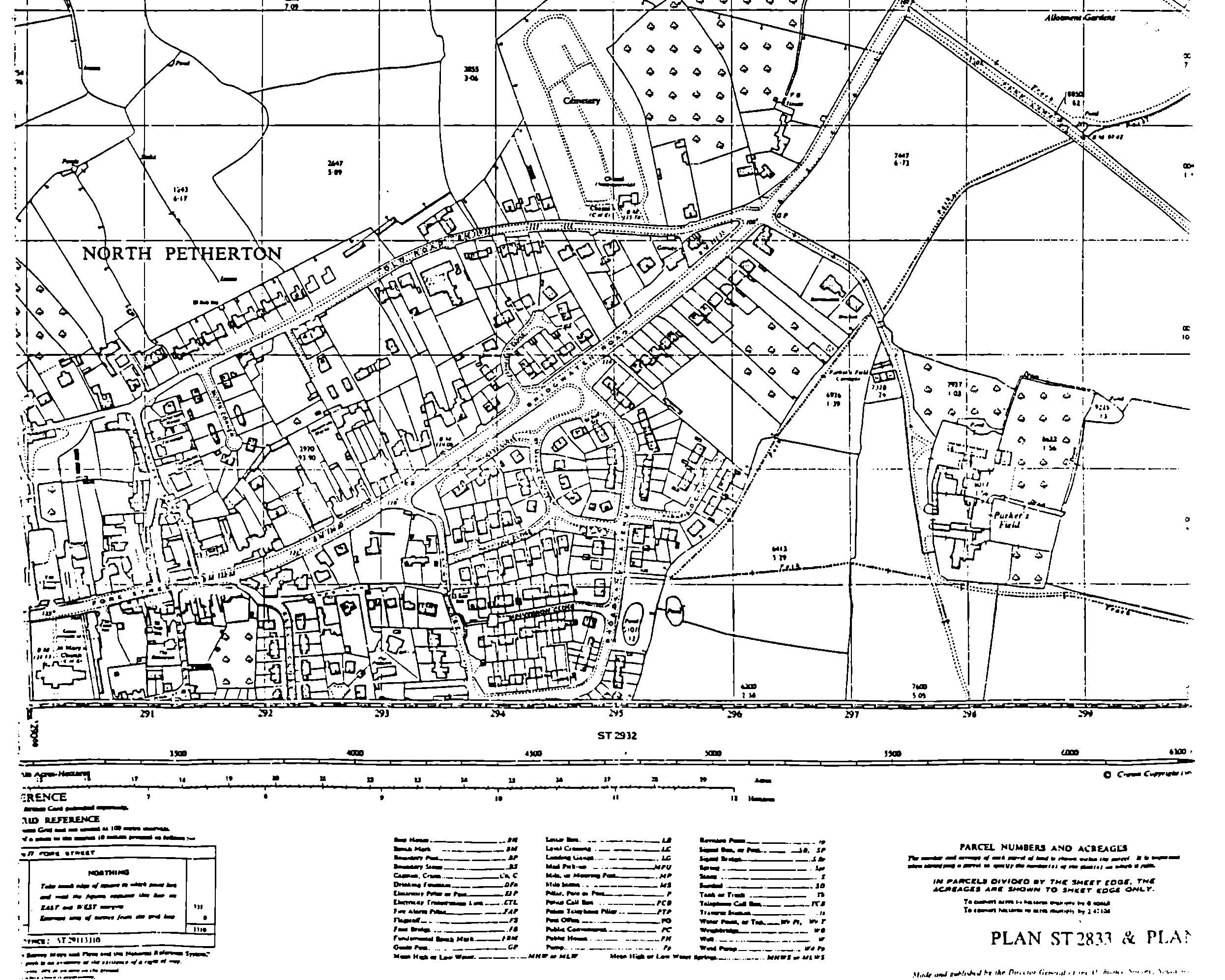
Clearly this was a massive task; in order to get the data collection right (and make sure school teachers could understand the required tasks and instructions) there was an initial pilot scheme involving seventeen schools. The following PDF from the BBC is one of the initial requests to schools explaining about the pilot scheme and encouraging interest and participation in the Domesday data collection:
Once the pilot scheme was completed, letters were sent to all schools inviting them to contribute to the Domesday project.
In order to prevent the need to transcribe all the work from students into digital form, a set of data collection programs were made available on both cassette and floppy, free-of-charge to the schools. The programs were written for both the Acorn BBC Micro and the RML 380Z/480Z (which were mainly used in inner-London schools at the time).
Data collection program media
The data collection programs were available on both tape and floppy disc and each school could request the most convenient media.
The following picture shows the data collection cassette (this was a series of cassettes with similar labelling):
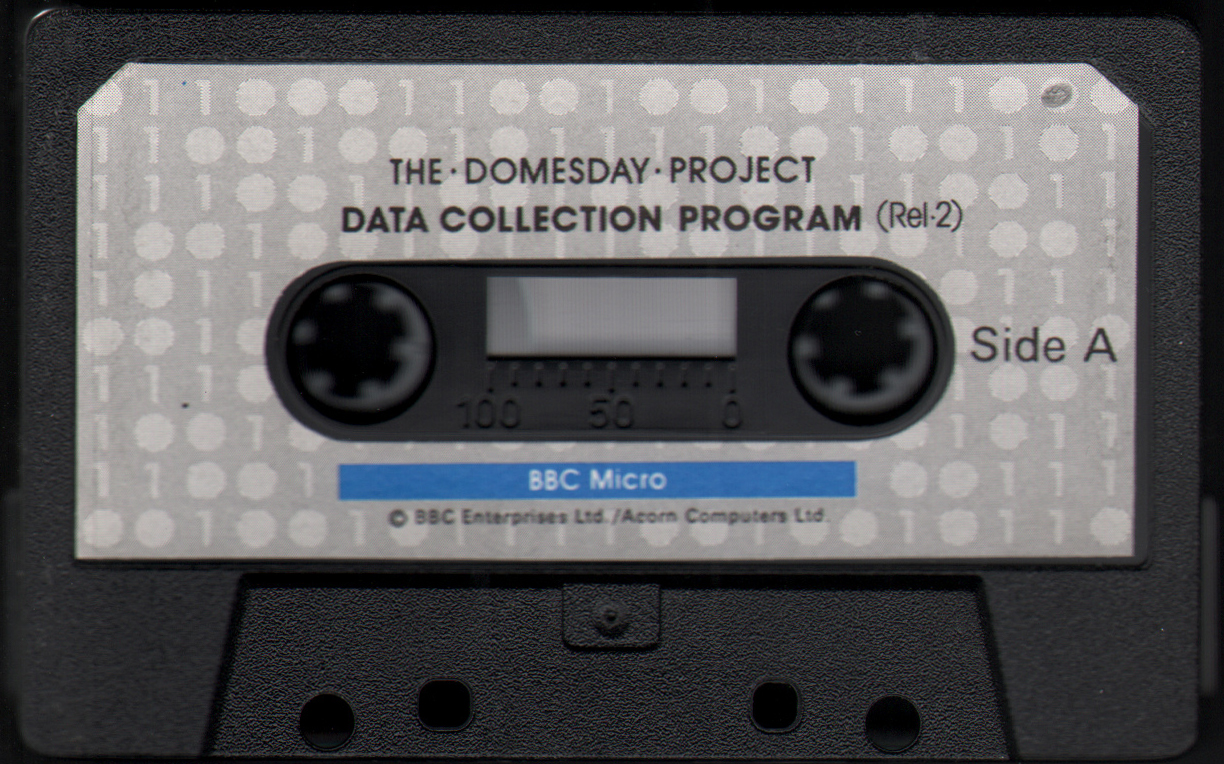
The following picture shows the data collection floppy disc:
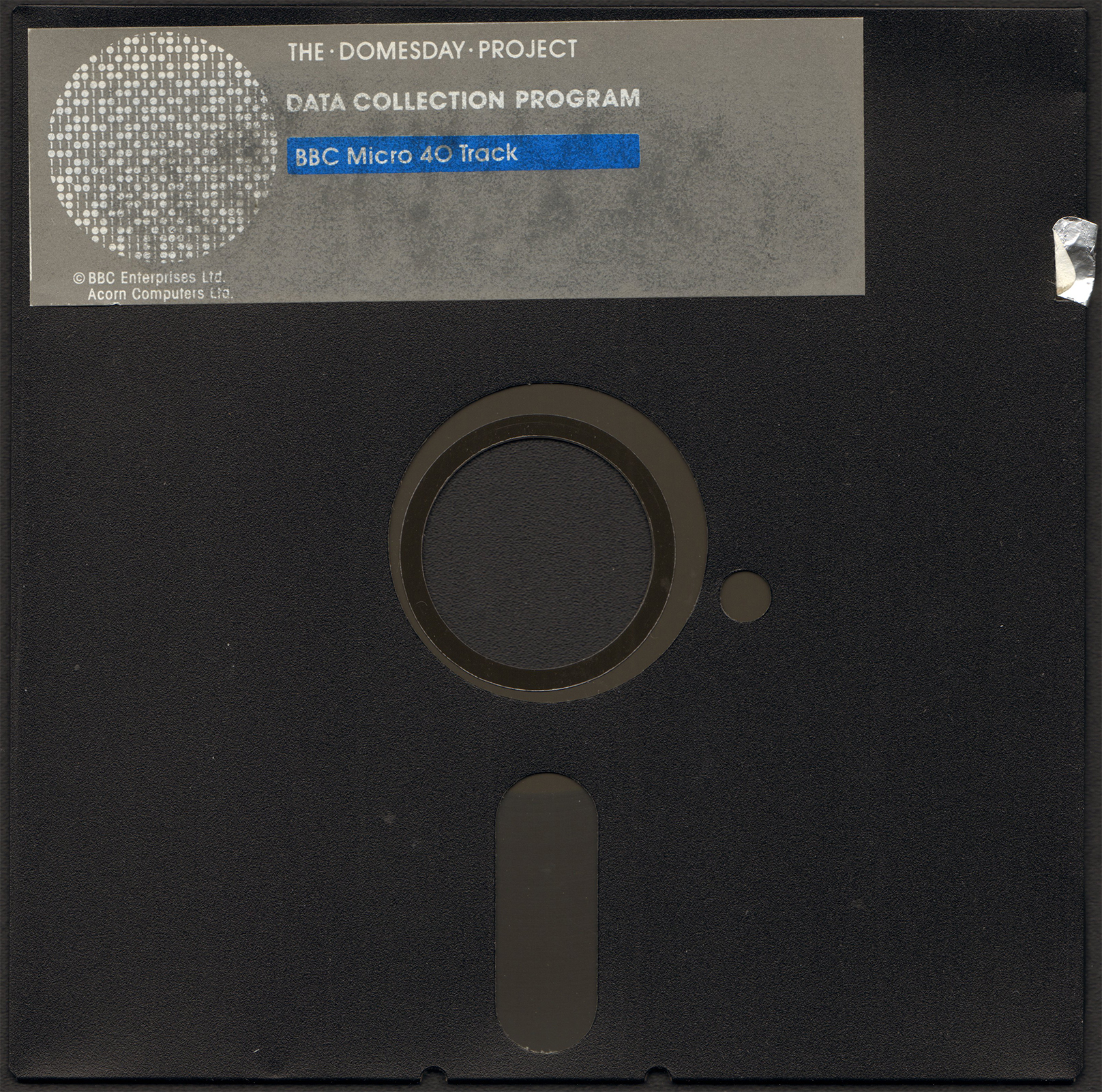
The following zip file contains data images of the collection floppy as double-sided floppy images suitable for emulation:
Note that the collection program requires a password "William" in order to function (this is covered in the user guide below).
Data collection user guide
In order to assist teachers with the data collection, the BBC supplied a user guide with both the cassette and floppy disc versions written by Peter Armstrong. The following PDF document contains a copy of the manual supplied with the cassette version:
Distribution of D-Blocks
Groups of D-Blocks (4x3Km squares used by the project to divide up the UK land mass) were allocated by the Domesday Project to local County Councils (Municipalities of the UK). The task of dividing this allocation amongst all the available schools (that requested to participate) was then handled at the local level.
The following PDF contains correspondence from Somerset county council to the local schools informing them of their allocations and what to do if they did not like the divisions.
Clearly the block allocation was not a simple and straight-forward process, as demonstrated by this follow on letter from Somerset County Council in response to the previous allocation letter
Participation from schools
As the following letter from the BBC to participating schools mentions, the response to the project was enthusiastic, with more than 9,000 schools participating in the project:
Data collation
Overview
Clearly, the responses from the 9,000 participating schools generated a large number of submissions, all of which needed to be collated and reviewed by the BBC project.
To assist with this task a 'computer centre' team was assembled, this team contained members from the BBC and a team from Loughborough university managed by professor Bertil Schou.
Processing of the data involved a network of BBC Micros that were used to read the submitted cassettes and floppy discs ready for transfer over to the VAX 11/750 mini-computer used by the BBC at Bilton House.
Process design
The overall process for the collation of Domesday data was designed by hand as a series of flow-charts. The following picture shows two of these charts. The left chart is the design for collating data from the cassettes and the right chart is the process for transferring data over Econet (the Acorn BBC networking protocol)
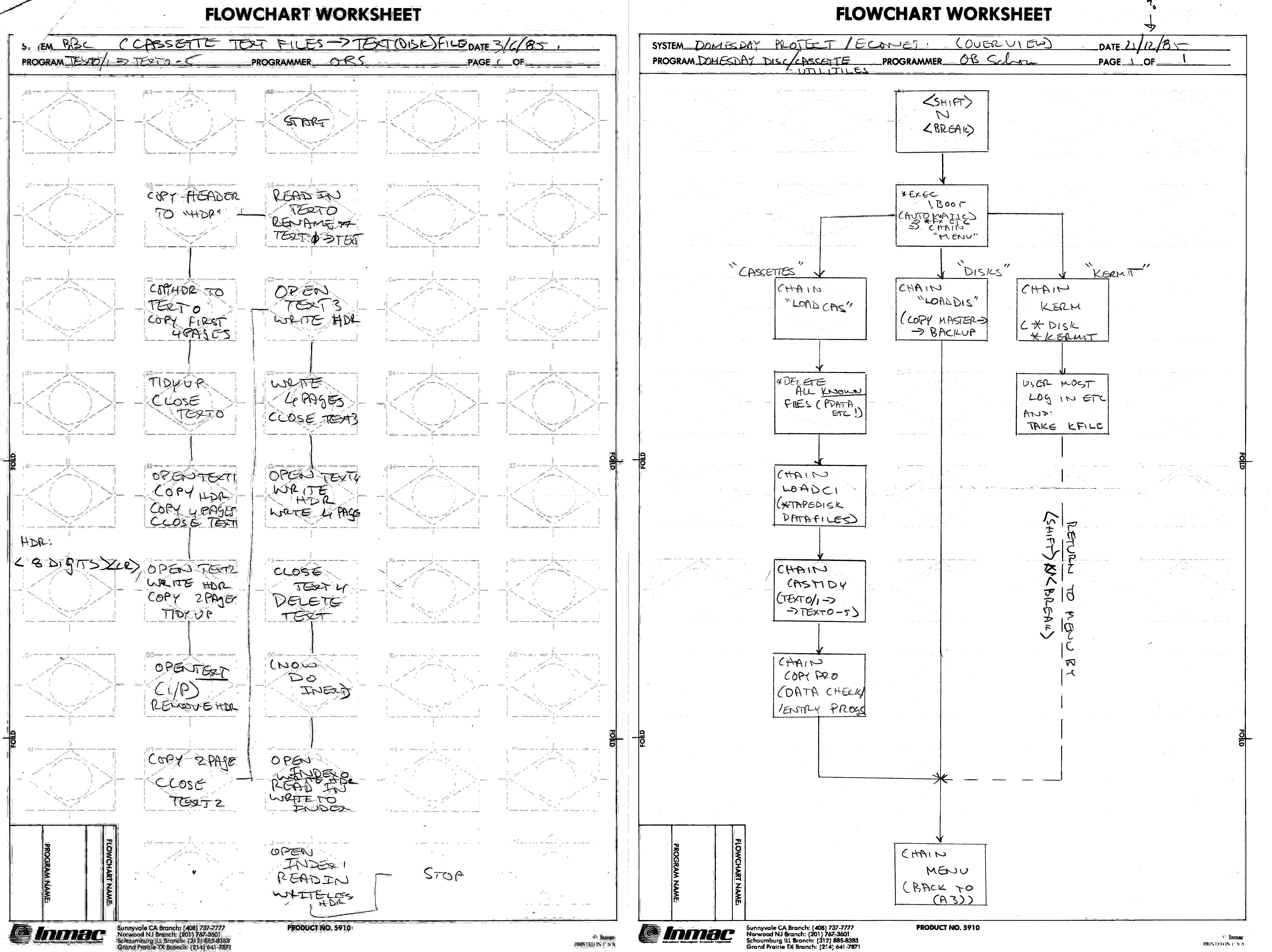
The following image is a print out from the initial testing of the collation process where the operator searches for the details of a particular school based on the grid reference:
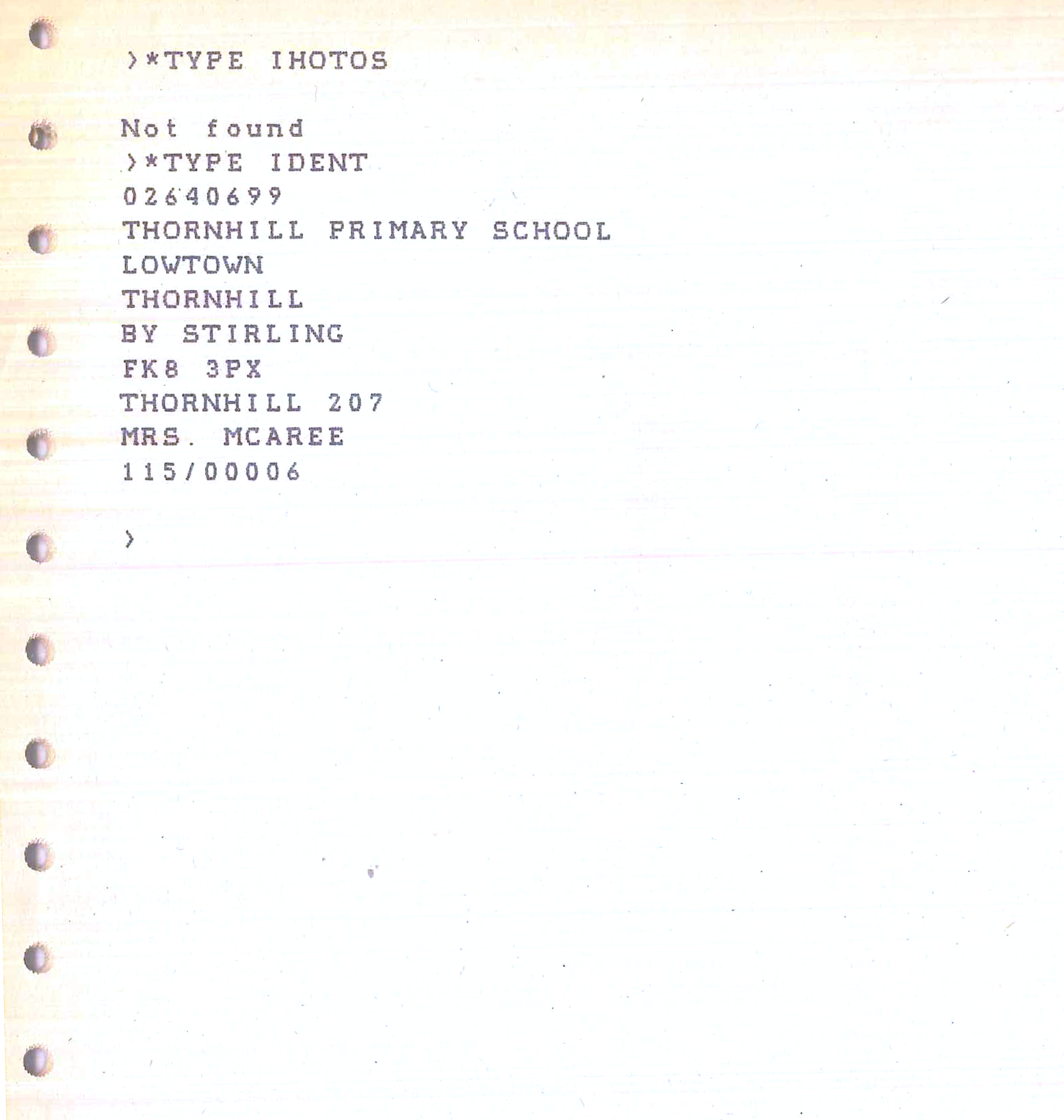
The following image shows the result of requesting the description for the D-block article based on grid-reference (this is the entry from the school listed in the print-out above):
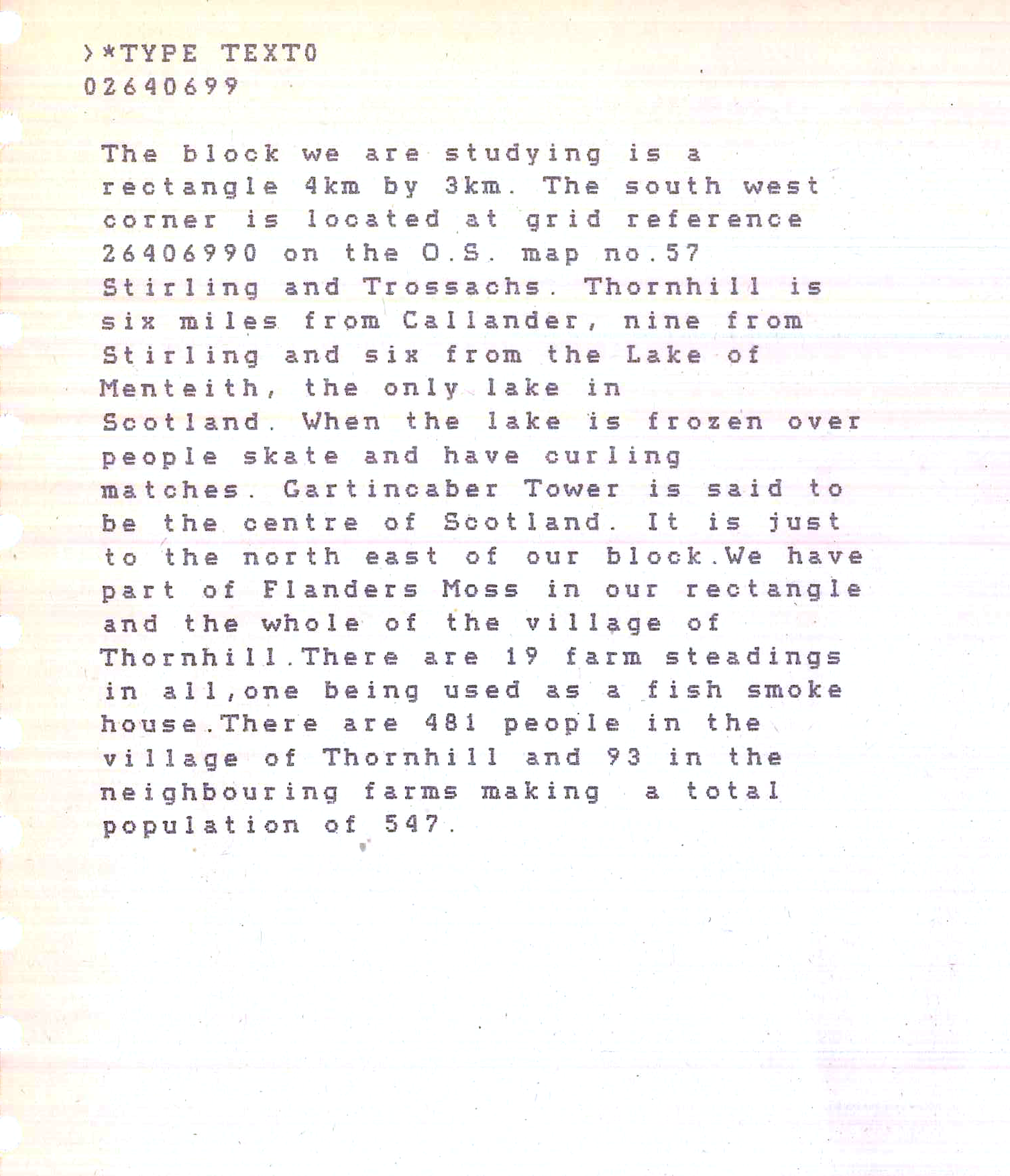
The block shown in the print-outs was submitted by the Thornhill Primary School near Stirling in Scotland. The article appears on the Domesday Community North disc and is shown in the following photograph from the released version of the LaserDisc:
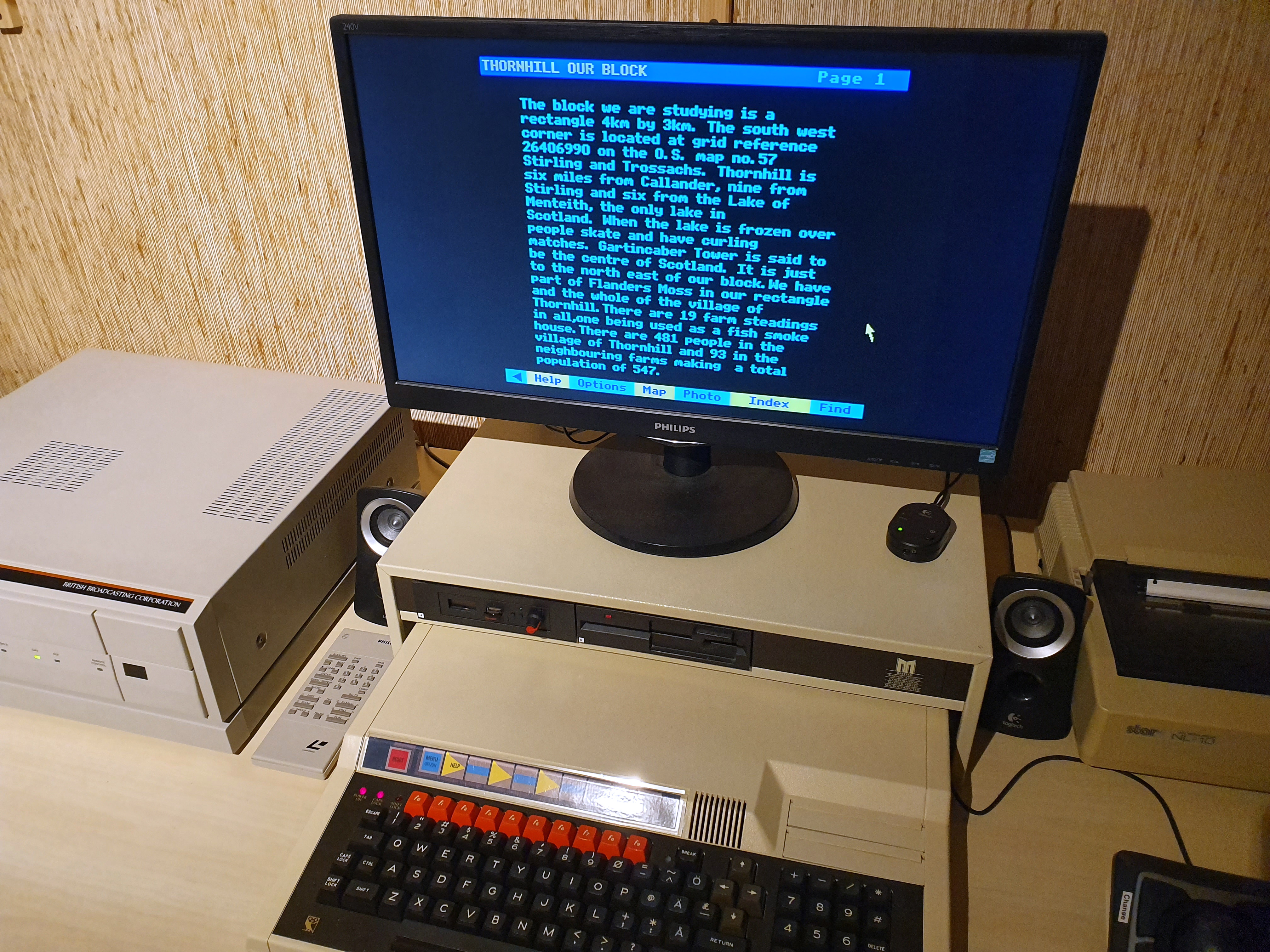
Data recovery procedure
After the initial testing was complete and the data recovery procedures had been defined and tested, a document was produced detailing the requirements for the collation procedure and the required equipment and commands. This document is included below as a PDF file:
Recognition
The editor of the Domesday project at the BBC (Peter Armstrong) wrote a personal letter of gratitude to Bertil Schou and his team thanking him for the work done for the Domesday project:
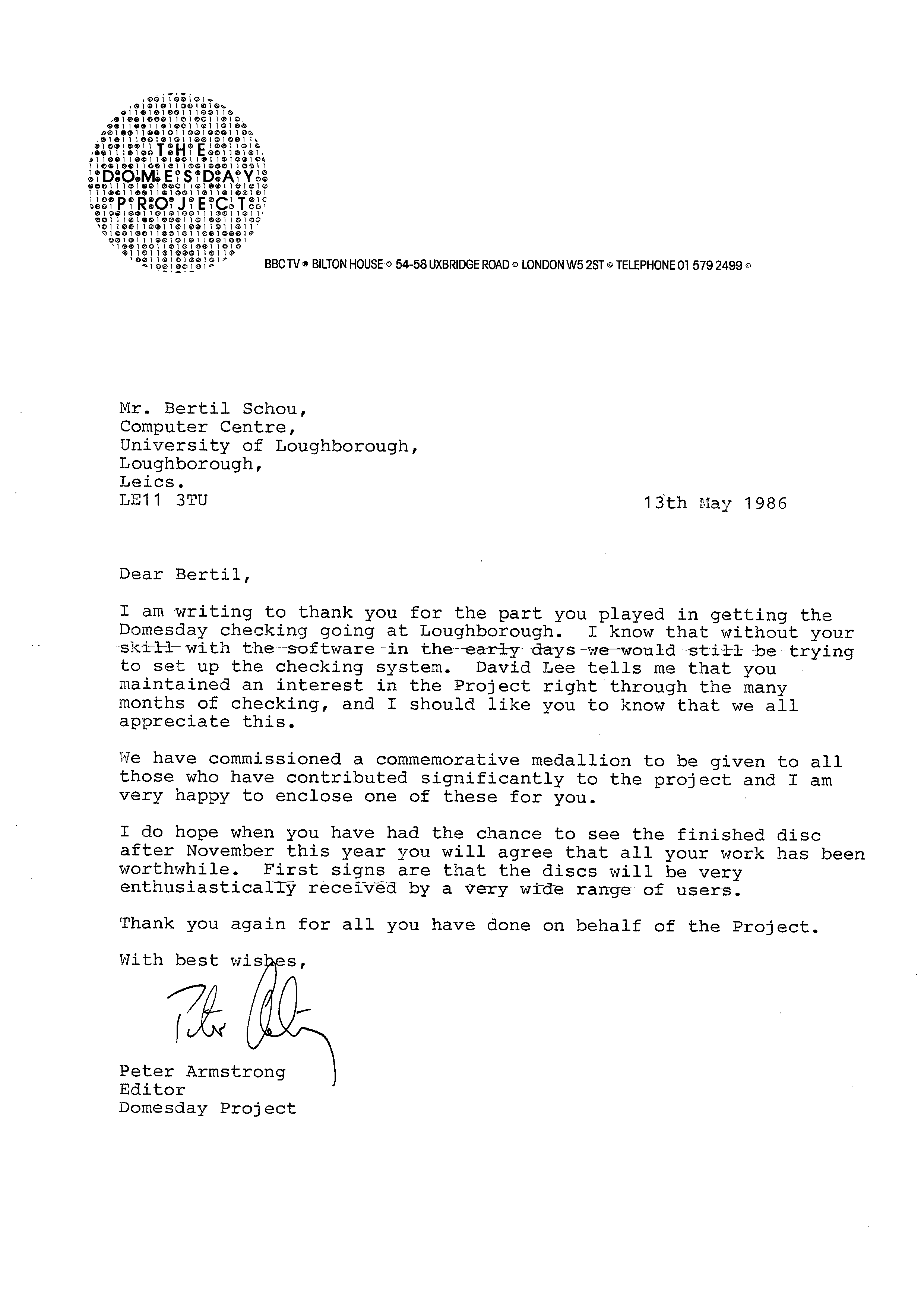
In the letter Peter mentions commemorative medallions which were commissioned by the BBC and given to Domesday project members as a sign of gratitude from the BBC to the major contributors. The following image shows the medallion presented to Bertil Schou:
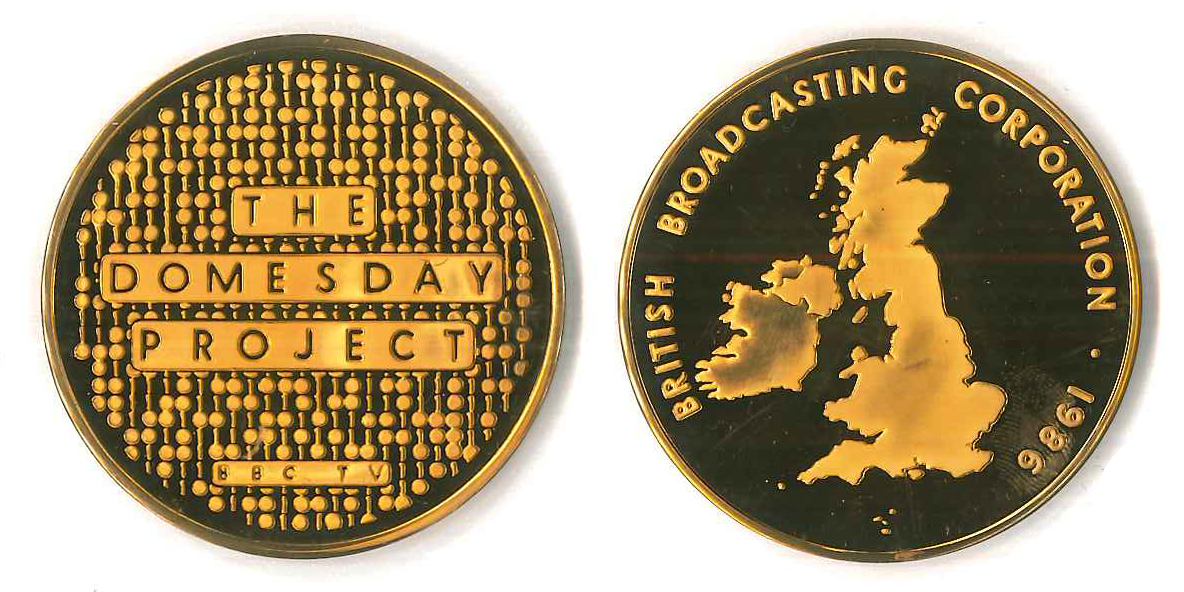
The Domesday Oak Tree
To celebrate the successful completion of the Domesday project and the work done at Loughborough university an oak tree was planted on the lawn of the computer centre. The occasion was marked with a buffet lunch, a video about Domesday and the tree planting itself:
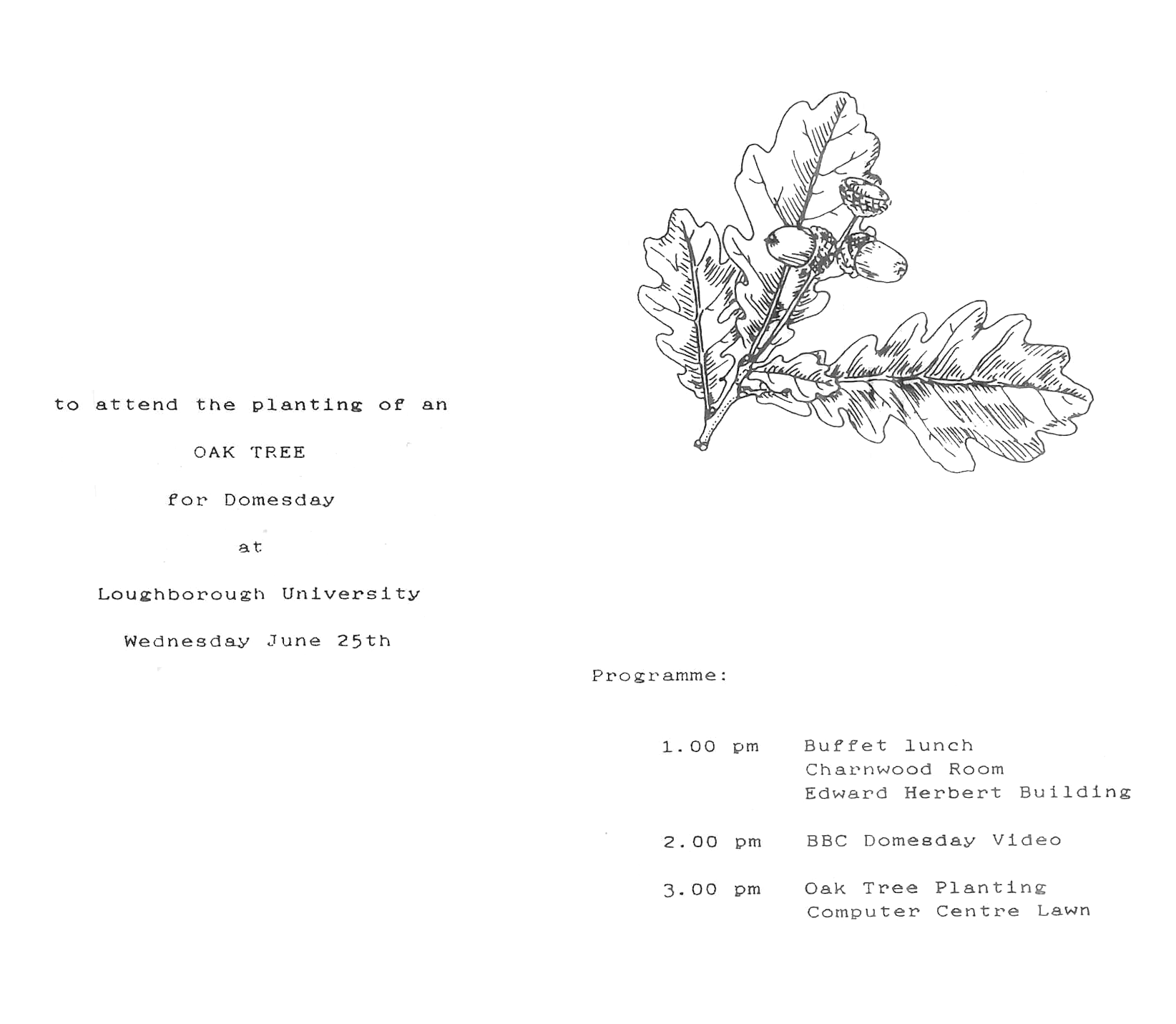
The following pictures were taken at the ceremony and show Ann Irving (lady in the red dress), Bertil Schou (white tie) and Peter Armstrong (blue tie) as well as the team's data coordinator/checker (white suit) planting the oak tree.
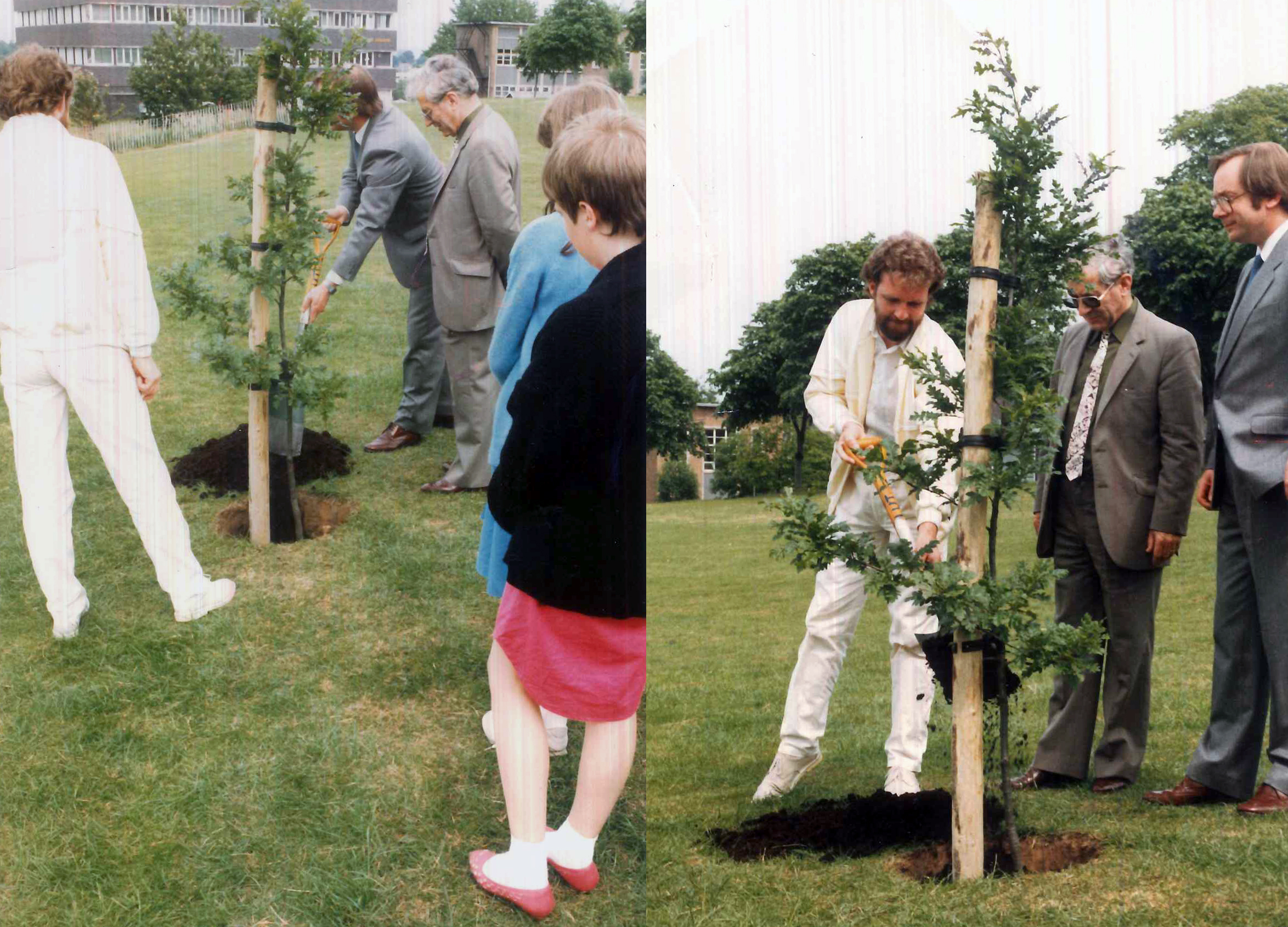
Acknowledgements
The Domesday86 project would like to thank Alex Wilson for supplying the Somerset school correspondence and Bertil Schou for kindly providing information about the data collection process, images, pictures and permission to publish them.
